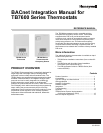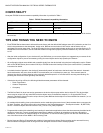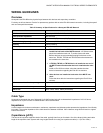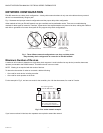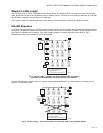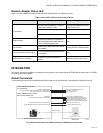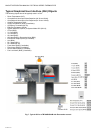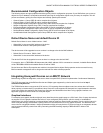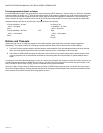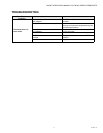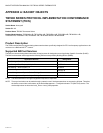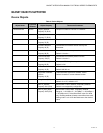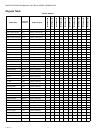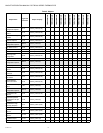
BACNET INTEGRATION MANUAL FOR TB7600 SERIES THERMOSTATS
63-4523—01 2
COMPATIBILITY
Honeywell TB7600 Series thermostat compatiblity information is provided in Table 1.
Table 1. TB7600 Thermostat Compatibility Information
* 128 total devices supported. One node used by controller and one for a repeater. A repeater is required if more than 64 devices
are on a bus.
TIPS AND THINGS YOU NEED TO KNOW
• Each TB7600 Series thermostat is delivered from the factory with the default MAC address set at 254 (referred to as the Com
Addr in the parameters at the thermostat). At this value, BACnet communication is NOT active and the device will not
participate in the token pass either. The local LED status for the communication adapter at this point is one short flash only. To
enable BACnet communication, set the local MAC address configuration property of the thermostat to any valid value from 0
to 127.
• After the initial configuration of your device and if your BAS allows you to remove objects, we suggest that you remove all the
configuration objects to prevent unnecessary polling of unused objects and to help speed up the network.
• All configuration objects are available and accessible locally from the device itself using the local configuration routine. Please
refer to the TB7600 Series (form number 62-2016) or TB7600 Series with Humidity Control (form number 62-2017) installation
instructions for details.
• In its default mode of operation, the device will automatically match its baud rate to the baud rate of the network. Automatic
baud rate detection will occur when the MS/TP communication port is initialized (on power up). If the network speed is
changed, the device will keep listening at the previously detected speed for 10 minutes before resuming auto-bauding. Re-
powering the devices will force right away auto-bauding.
• If the device should go off-line, the following binded thermostat parameters will be released:
• Room Temperature
• Outdoor Temperature
• Occupancy
• The BACnet Data Link layer has two key parameters: the device object name and the device object ID. The device object
name must be unique from any other BACnet device object name on the BACnet network (i.e. not just the MS/TP sub-
network). The device object ID must be unique from any other BACnet device object ID on the entire BACnet network (i.e. not
just the MS/TP sub-network).
• On models with scheduling, time synchronization can be made through a network even if the thermostat does not support the
full date. Therefore, the device cannot claim conformance to the DeviceManagement – TimeSynchronization - B (DM-TS-B)
service. The device object does not have the Local_Time or Local_Date properties.
• Programmable models (with scheduling) are intending for stand-alone applications where the thermostat may be added to the
network at a later time. Once a programmable thermostat is added to a network all schedule must be done through the
Workbench. Local control of network settings is not supported. To hide the scheduling option from the local thermostat use
one of the BIs and set to Rem NSB if a BI is not being used.
• Device Name and Device ID properties are writable in Honeywell device object. Both properties can be renamed from any
BACnet network management tool as long as the tool itself gives access to write to these properties.
WEBs-AX Controller Thermostats Per Controller* WEBStation-AX
WEB-2xx 126 3.0 or later
WEB-6xx 126 3.0 or later
WEB-7xx 126 3.5



